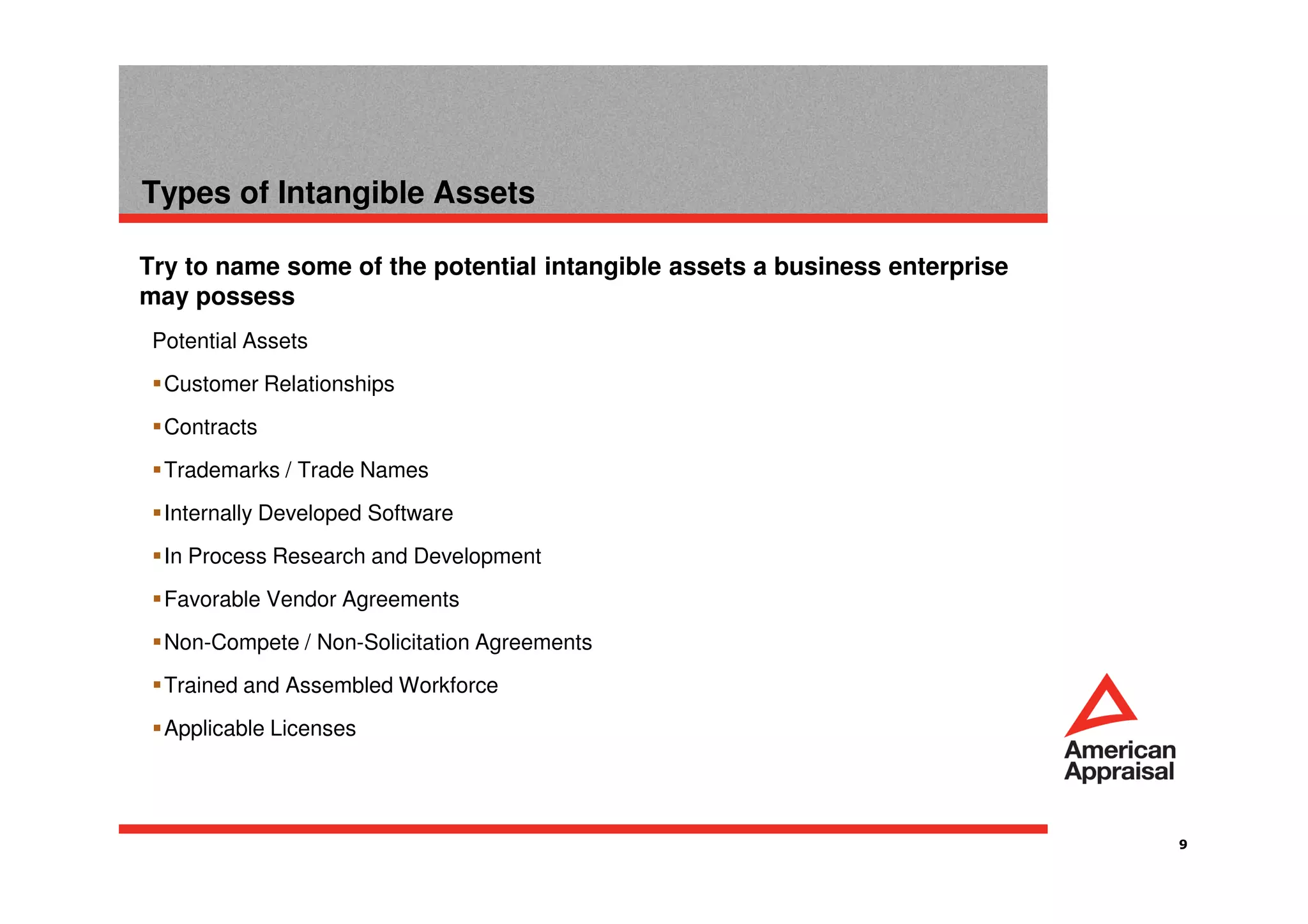This document provides an overview and introduction to intangible assets. It discusses the key types of intangible assets including marketing-related assets like trademarks and trade names, customer-related assets like customer lists and relationships, technology-based assets like patented technology and computer software, and contract-based assets like licenses and non-compete agreements. The document defines each type of intangible asset and provides examples to illustrate the different categories.















































